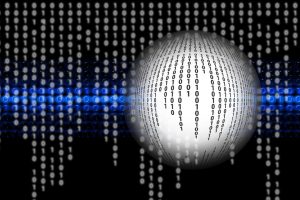
The Ultimate Guide to Email Optimization
The Ultimate Guide to Email Optimization Email marketing has been a fundamental tool for many businesses to communicate with their customers and reach out to
The Evolving Landscape of Digital Art Design
In the world of art, new mediums and technologies have constantly emerged, each bringing its unique aesthetic potential. One such medium is digital art, which has come a long way since its early beginnings in the 1950s. With the development of digital technologies and the internet, digital art has evolved into a multi-faceted medium, encompassing a range of techniques, styles, and platforms. Let’s explore the evolving landscape of digital art design.
What is Digital Art?
Digital art refers to an artwork created using digital technologies. It encompasses a variety of forms, including digital painting, 3D modeling, animation, and graphic design. With the advancement of software and hardware technology, artists have access to a vast range of digital tools that allow them to create art in ways that were previously impossible. Digital artworks are usually created on a computer, tablet, or smartphone using specialized software, and can be displayed on a variety of mediums, including print, screen, and projection.
The Rise of NFTs
Non-fungible tokens (NFTs) have revolutionized the way digital art is valued and sold. An NFT is a unique digital asset that exists on a blockchain, a digital ledger that verifies ownership and authenticity. NFTs enable artists to sell digital artworks as one-of-a-kind collectibles, providing a new market for digital art. With high-profile sales like the $69 million sale of Beeple’s digital artwork, “Everydays: The First 5000 Days,” NFTs have gained significant attention and hold the potential to change digital art’s financial landscape.
The Intersection of Art and Technology
Digital art has blurred the boundaries between art and technology, bringing a new level of interactivity and user engagement. From interactive installations to augmented reality experiences, digital art has opened up new possibilities for audience participation and immersion. Social media platforms like Instagram and TikTok have also provided new platforms for artists to showcase their work and reach wider audiences.
Challenges and Opportunities
As with any new medium, digital art presents a range of challenges and opportunities for artists and the art world. Digital artworks can be easily reproduced and distributed, posing risks to artists’ intellectual property rights. The sale and ownership of NFTs raise questions around ownership and authenticity, and the environmental impact of blockchain technology has been scrutinized. Nevertheless, digital art offers exciting potential for collaboration, experimentation, and innovation.
Conclusion
Digital art has come a long way in a relatively short time, and its potential for growth and evolution is immense. As artists continue to push the boundaries of digital art, the possibilities for new forms and expressions are endless. NFTs, the intersection of art and technology, and the challenges and opportunities presented by this medium are only a few aspects of the rapidly evolving landscape of digital art design.
FAQs:
Q: What kind of skills does one need to become a digital artist?
A: Digital artists need skills in using specialized software and hardware, as well as a keen eye for aesthetics and composition. Formal training in art and design can also be beneficial.
Q: What are some common software programs used by digital artists?
A: Common software programs used by digital artists include Adobe Photoshop, Adobe Illustrator, Autodesk Maya, and Cinema 4D.
Q: What are the benefits of creating digital art?
A: The benefits of creating digital art include the ability to experiment with new techniques and media, the potential for wider reach and exposure using social media, and the ability to collaborate and work remotely.
Q: What are some of the challenges in selling and owning digital art?
A: Challenges in selling and owning digital art include establishing ownership and authenticity, navigating the legal and financial landscape, and addressing concerns around environmental impact and sustainability.
Q: How has digital art impacted the traditional art world?
A: Digital art has challenged traditional notions of art and what constitutes an original artwork. The rise of NFTs and online marketplaces for digital art have opened up new ways for artists to monetize their work and reach new audiences.

The Ultimate Guide to Email Optimization Email marketing has been a fundamental tool for many businesses to communicate with their customers and reach out to

Revolutionize Your Email Marketing with Interactive Cloud Technology Email marketing is one of the most effective ways to reach out to potential and existing customers.

Title: 10 Must-Have Sections in Your Marketing Proposal Template Marketing proposals are an essential tool that businesses and agencies use to pitch their marketing strategies

Talk with us!
Do you have a project in mind? Send us a message to understand how we can help you. We will get in touch with you.